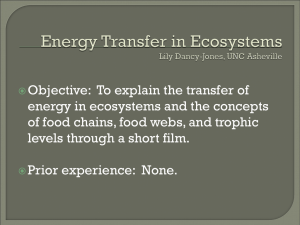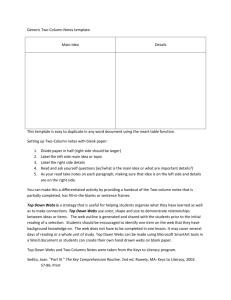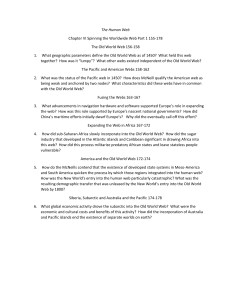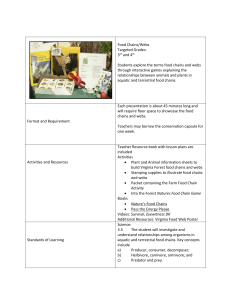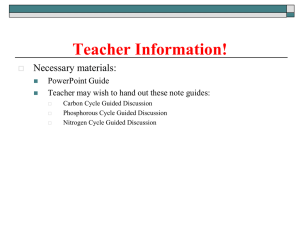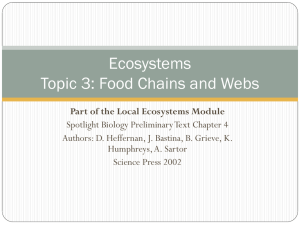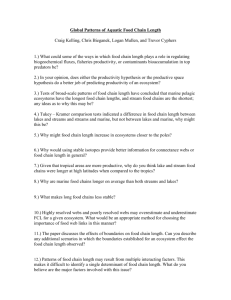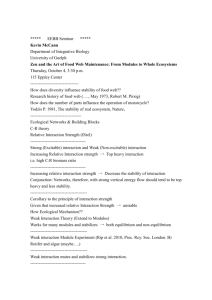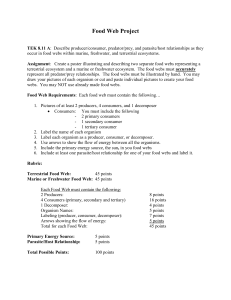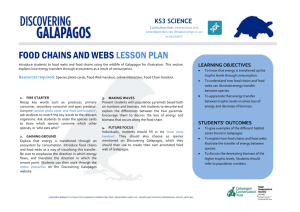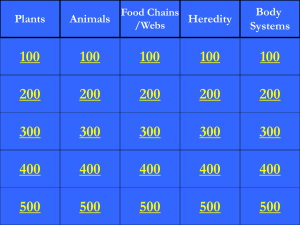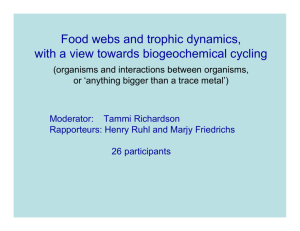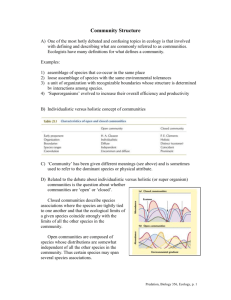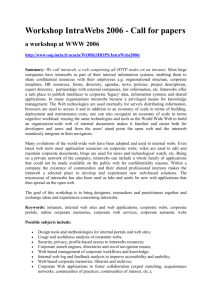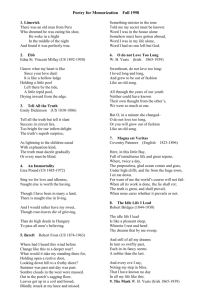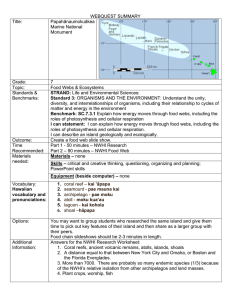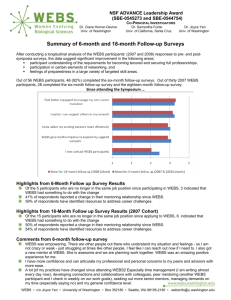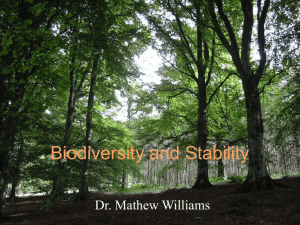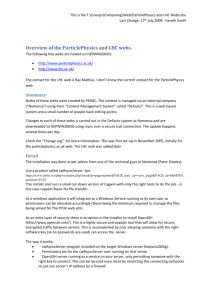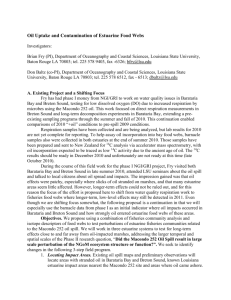Food Chains, Food Webs, and Trophic Levels
advertisement
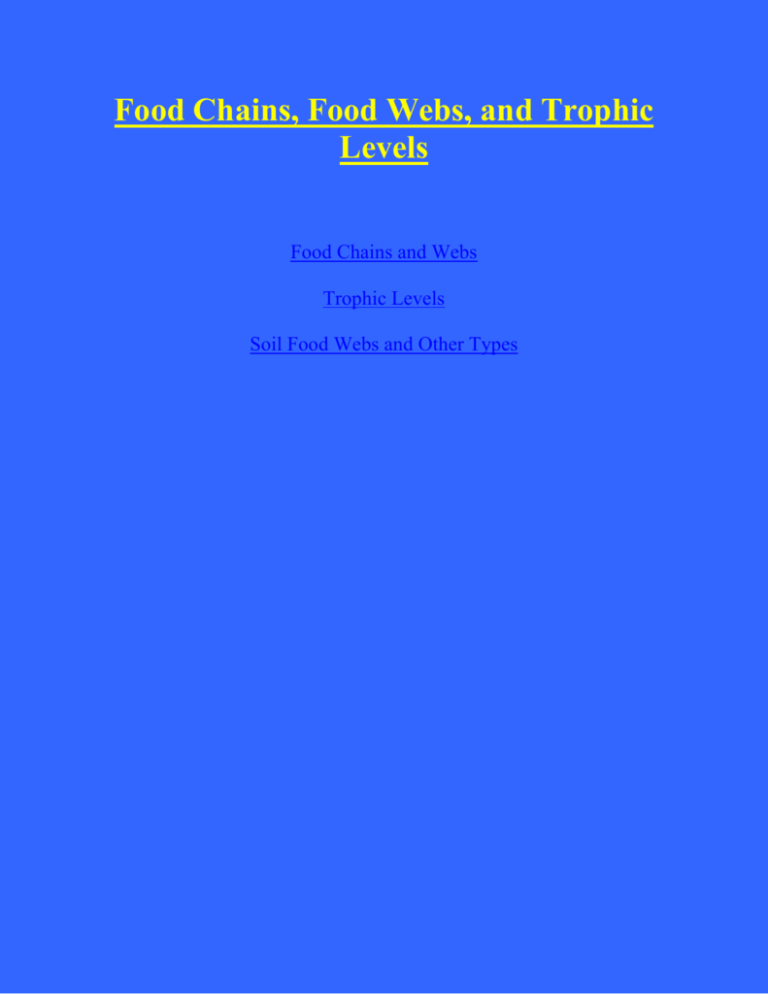
Food Chains, Food Webs, and Trophic Levels Food Chains and Webs Trophic Levels Soil Food Webs and Other Types Example of a food web example of food chain Possible Activities for Classroom Circle of Life - This is a great activity for introducing food chains and webs…connects to children’s own eating habits; I would use this as an introduction to food webs. Creating an Actual Food Web – This is a great activity for students to understand food webs by actual hands-on learning. I would use this lesson once students have an understanding of what food webs are. Oh, What a Tangled Web We Weave! – This has extension activities and will really help understanding with a hands-on approach and research skills are needed. I would use this lesson as a culminating activity Interdependence in Food Webs – This shows how the elements are all connected and if one is lost; the whole food chain may not exist anymore. Local Issues Timber Rattlesnakes- They are becoming extinct, due to loss of habitat and human persecution. However, Indiana is hosting relocated Timber Rattlesnakes, with the hopes of saving them. However, once they are introduced to Indiana, they become a major player in a food web. They eat small mammals (mice, squirrels, chipmunks, shrews, weasels, etc.) and also have been known to eat ground nesting birds. What would this mean to small mammals? ~~ This would be a good example for upper elementary students to get them thinking about local issues and how the newly relocated Timber Rattlesnakes would affect the animals already living in the environment… Water Flea – These were introduced to Southern Lake Michigan in 1999 and are a serious threat. They have no known enemy and rapidly reproduce. They also eat zooplankton, which are what the small fish in the area feed off of. If the water flea controls the zooplankton, the small fish will have nothing to eat and die off and their predators will not have that source as food anymore.
